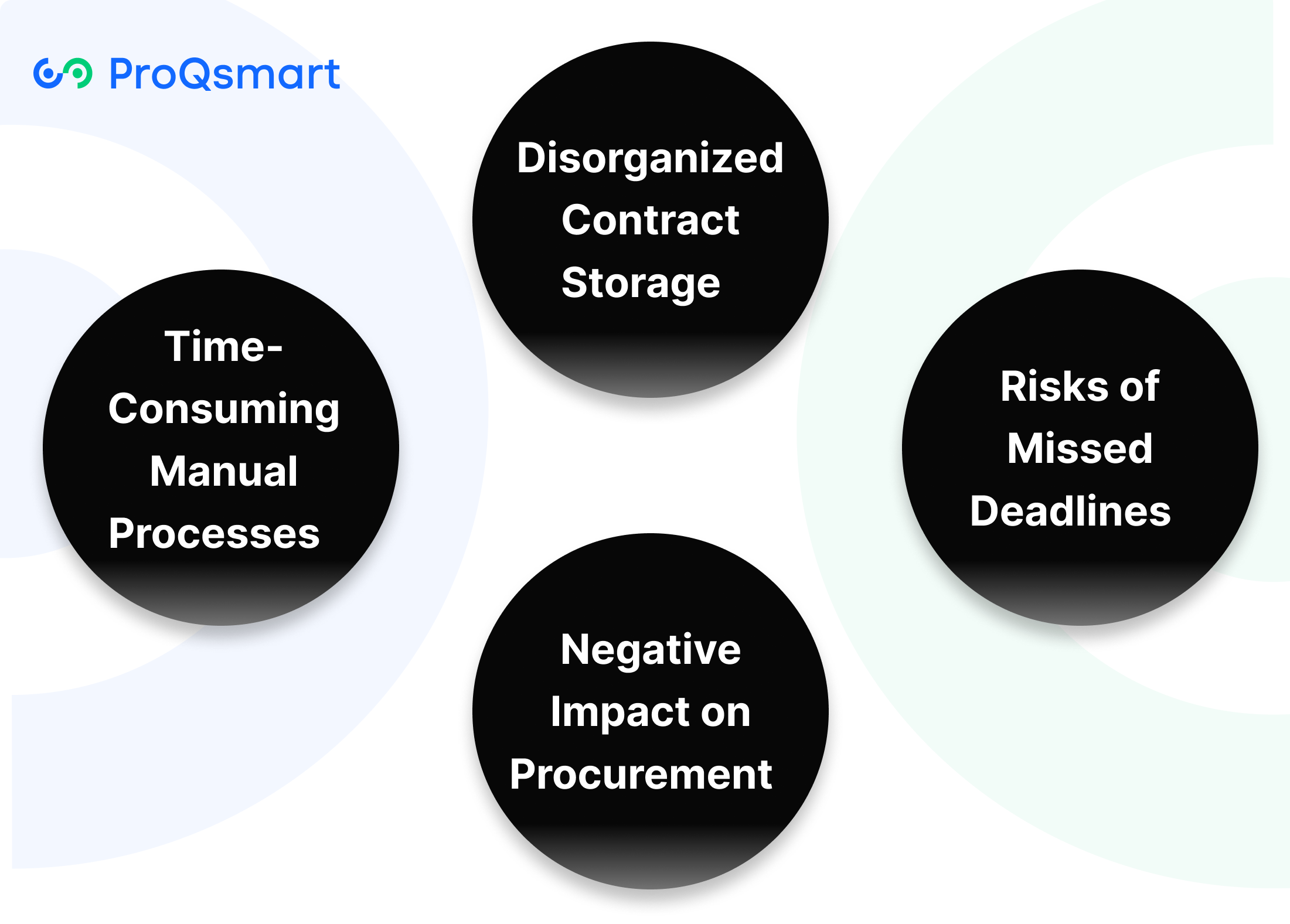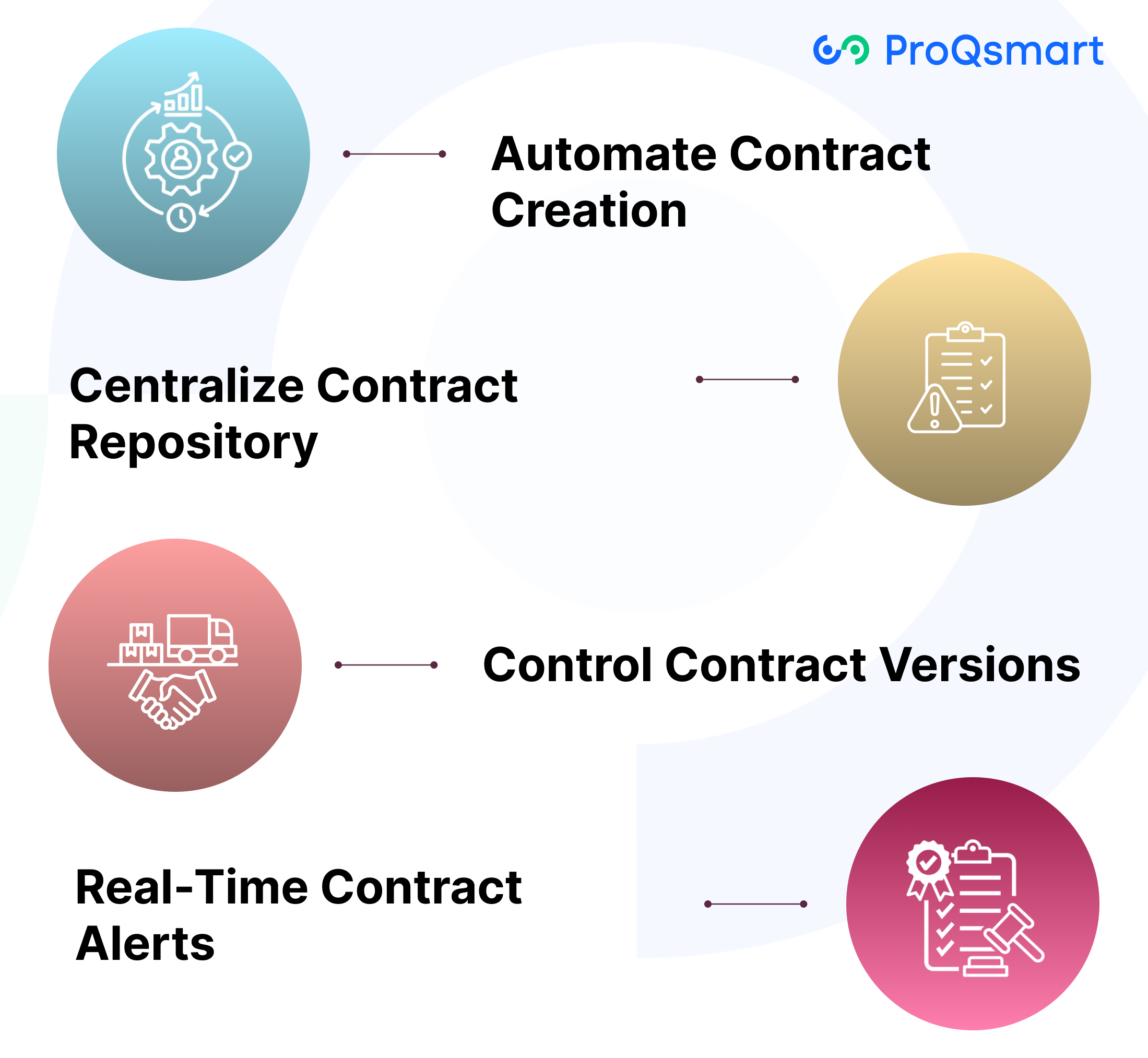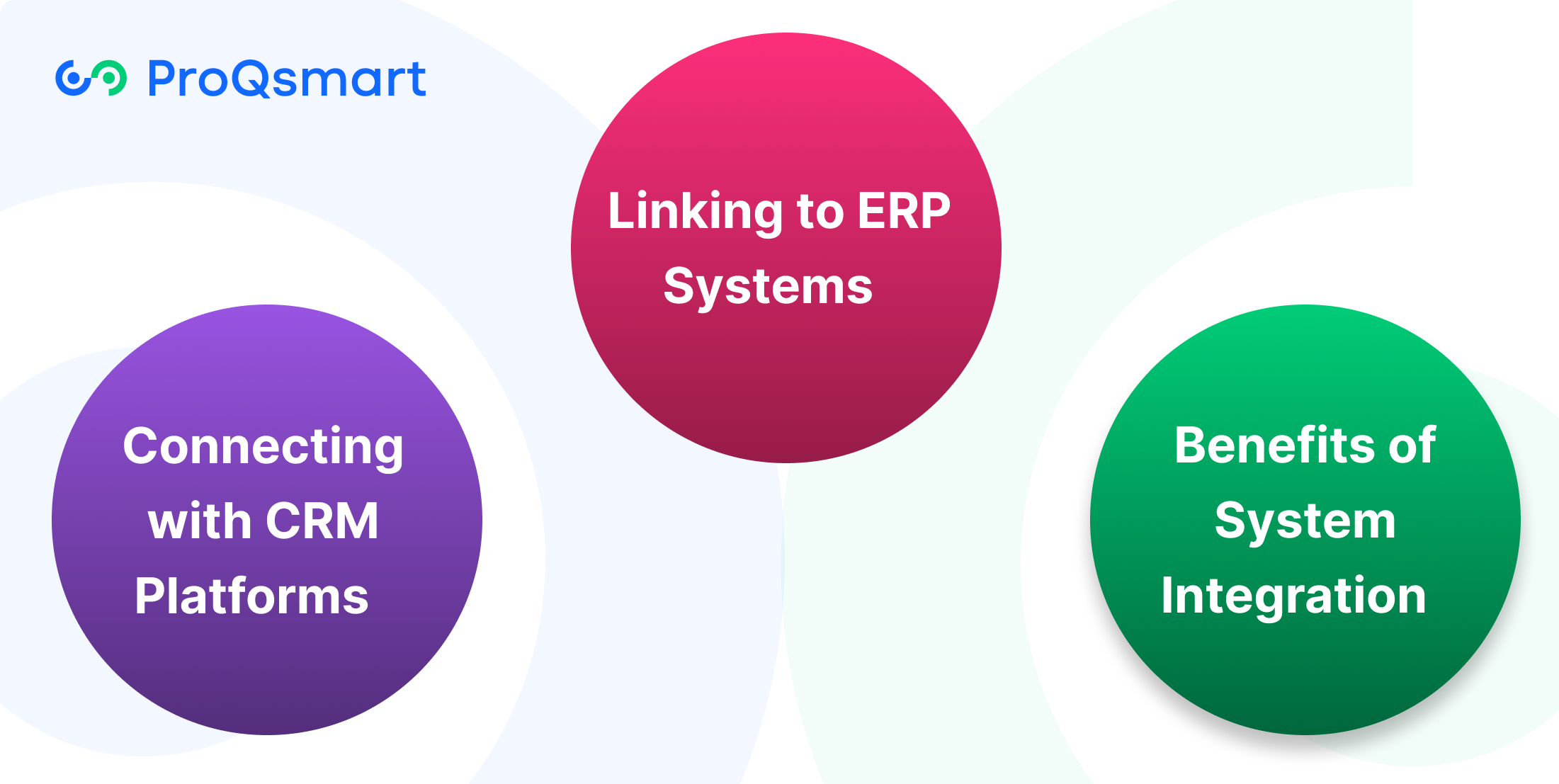Contract lifecycle management (CLM) is a clearly defined and organized process. It handles contracts from creation through execution, monitors contract performance and allows for renewal or termination of contracts.
It makes sure that each phase of a contract works to the maximum benefit in terms of compliance, cost-effectiveness, and operational needs. With a fully integrated CLM strategy, you’ll mitigate risks, foster more productive vendor interactions, and ensure greater transparency in all procurement operations.
Workflows digitized at scale Technology and tools become the great enablers of productivity and efficiency. They allow for automated tracking, aiding in the fulfillment of deadlines and obligations.
For professionals in procurement and supply chain management, mastering CLM is essential to enhance decision-making and align with organizational goals. The following sections will explore strategies, best practices, and tools to help you navigate the complexities of contract management effectively.
What is Contract Lifecycle Management (CLM)?
Contract Lifecycle Management (CLM) is a defined process that governs all stages of contracts, including the crucial contract management processes. It regulates the development, implementation, and administration of contracts from their inception until their expiration or renewal. This 360-degree view tracks and manages each step of a contract’s lifecycle, enhancing the overall contract lifecycle management process.
It streamlines the entire process from initial drafting and negotiation, through approval and performance tracking, to final closure. CLM is more than simply warehousing contracts; it facilitates ongoing, proactive contract management using advanced contract lifecycle management software.
It leads organizations toward using contracts as strategic assets, rather than avoiding or ignoring them as stagnant documents. Improper contract management can lead to loss of compliance, failure to fulfill contractual obligations, and overall liability risk, making effective contract management imperative. By taking a structured approach to contract management, organizations can protect themselves from missed due dates, reduce risk, and improve performance.
Challenges of Manual Contract Management

Manually managing contracts presents real challenges that hinder organizations’ efficiency, complicating procurement and supply chain processes, highlighting the need for effective contract lifecycle management solutions.
Time-Consuming Manual Processes
Manually drafting and approving contracts can stretch timelines even longer. Hefty negotiation cycles waste internal resources and can take crucial execution time, ultimately prohibiting necessary supplier onboarding and timely project kickoffs.
This piecemeal approach makes it so staff have to constantly request information. This manual inefficiency makes the case for an urgent need for automation to help streamline the process.
Digital solutions can simplify these steps, quickening turnaround time while liberating teams to focus on more strategic initiatives.
Disorganized Contract Storage
Without this centralized storage, searching for contracts or other required metadata turns into a laborious task, oftentimes taking hours or even days. This lack of organization makes it easy to misplace agreements or overlook profit-generating opportunities like letting lucrative partnerships expire.
Digital contract repositories allow for instant, centralized access and contract repository search functionality helps keep contracts easy to find and up-to-date.
Risks of Missed Deadlines
Missed deadlines due to manual tracking may lead to financial penalties or costly legal disputes. Increased oversight, like missing payment terms or regulatory deadlines, are easy to make with manual systems.
Automated reminders and alerts reduce this risk and make sure that no one misses an important deadline.
Negative Impact on Procurement
Contract management inefficiencies break up the entire procurement workflow, unintentionally fostering adversarial relationships with suppliers. The bottomline manual mistakes or legacy data can cost your organization money by overpaying for mismanaged CLM solutions.
With effective CLM, organizations can create positive flows of operation by integrating ESG commitments and proactively managing risks with timely, precise data.
How Contract Lifecycle Management System Enhances Efficiency

Contract Lifecycle Management (CLM) systems streamline the entire contract management process, from creation to renewal, by consolidating tasks into a centralized, automated platform. By adopting effective contract lifecycle management solutions, organizations can reduce manual effort, improve accuracy, and ensure compliance, driving operational efficiency and cost savings.
Automate Contract Creation
Automation, particularly in the creation of contracts, makes drafting easier by utilizing pre-approved contract templates. This greatly cuts down the overall time required to produce a contract. Intelligent contract generation uses AI technology to automatically fill fields within the document so that each individual document meets company standards.
Notably, this automation ensures missed clauses are eliminated, increasing the overall accuracy and lowering risk. Take ProQsmart, for example, whose platform pairs with AI-driven solution to produce contracts that accomplish procurement objectives without abandoning regulatory necessities. The time each team wastes on manual processes could be spent on strategic endeavors, saving an average of 20 hours a week.
Centralize Contract Repository
With a single digital repository, contracts are stored in a secure environment that’s much easier to find. A centralized storage helps stakeholders stay on top of their milestone dates, deliverable monitoring, and document access with no lag time.
When combined with intuitive interfaces, such as those offered by ProQsmart, even vast contract databases are easily navigated. Centralization increases transparency and collaboration and reduces the time spent looking for documents.
Control Contract Versions
Change-tracking capabilities and version control are key tools for keeping clear, thorough records. With CLM tools, stakeholders can always be sure they are viewing the most up-to-date version of a contract. This minimizes confusion and miscommunication.
Historical documentation gives agencies the data they need to address a dispute or prove compliance decades later.
Real-Time Contract Alerts
Automated alerts help your team stay on top of important milestones, preventing lapsing renewals and keeping you compliant. Notifications help businesses avoid delays or penalties and track obligations effectively.
ProQsmart’s real-time tracking continues to empower proactive decision-making at every stage.
Industry Applications of Contract Lifecycle Management (CLM)
Contract Lifecycle Management (CLM) is a cornerstone of operational efficiency. By automating complex workflows and enforcing compliance across all contract touchpoints, CLM solutions enable businesses to drive better collaboration. In doing so, they can protect nearly 40% of a contract’s potential value that would otherwise be wasted through inefficiency.
These tools have matured past just being document storage shadows. Today, they’re providing dynamic capabilities such as automated notifications and approval orchestration, demonstrating their flexibility to align with the changing needs of the business.
CLM in Construction
CLM can make all of this easier by streamlining and automating contract workflows, tracking compliance with changing regulations.
Take, for example, ProQsmart’s subcontractor management process, which is made efficient with automated pre-qualification and performance monitoring. This helps maintain safety standards, preventing expensive project delays or litigation while delivering on time to project-specific safety commitments.
CLM in Manufacturing
For manufacturing, fast and efficient procurement through a smooth supplier contract lifecycle is critical. That’s where Contract Lifecycle Management (CLM) systems, like ProQsmart, come in handy by substantially reducing lead times.
They help government align procurement with production schedules and cultivate transparent relationships with suppliers. By harnessing capabilities such as real-time collaboration and supplier performance tracking, manufacturers ensure alignment and prevent workflow disruptions.
CLM in Hospitality
Hospitality contracts are typically the renovation vendors as well the typical service providers. By using CLM tools to comply with sustainability standards, companies can create the best vendor agreements possible.
ProQsmart’s contract management tools offer unparalleled transparency and cost-saving measures that are imperative to maximizing the productivity of multifaceted contracts efficiently within this industry.
CLM in Interior Fit-Out
Interior fit-out projects benefit from contract lifecycle management software (CLM) through efficient management of design contracts and material procurement. With automated workflows, the contract management process enhances timely execution and coordination of subcontractor agreements, reducing costly delays and aligning everything with project timelines.
Best Practices for Implementing CLM
Implementing Contract Lifecycle Management (CLM) effectively requires a thoughtful approach that aligns with organizational objectives, integrates seamlessly with existing systems, and empowers teams through training and automation.
These four areas are key foundations for any business looking to truly benefit from the power of CLM tools.
Establish Clear CLM Goals
If you’re looking for the best practices involved in implementing CLM, this is the first one—defining clear goals. Measurable goals, such as cutting contract approval time in half, propel action. They improve compliance and keep initiatives focused on advancing overall business strategy.
For example, measurable outcomes like reducing contract turnaround time by 30% within six months help evaluate success and refine processes. These objectives can provide not only a vision to guide adoption but a means of tracking progress as benchmarks, leading to greater accountability and efficiency.
Integrate CLM with Existing Tools
By integrating your CLM systems with other platforms such as CRM and ERP solutions, you’re creating a seamless workflow. When you add e-signature tools like DocuSign or Adobe Sign, data accuracy skyrockets.
Smooth data sharing between departments means everyone is always looking at the same data, eliminating the chance for manual errors and duplication. Centralized, digital contract repositories give your teams the power to easily and securely access contracts.
At the same time, automated workflows accelerate contract request, approval, and archiving processes. ProQsmart goes a step further by allowing integration with procurement tools to increase visibility and supplier collaboration, ensuring contracts are in line with budgets established in real time.
Monitor Contract Performance
Consistently monitoring performance metrics within contract management software helps to spot trends, guide negotiations on renewals, and keep your organization in compliance. Analytics tools offered within CLM platforms show where you’re improving, ensuring effective contract lifecycle management and ongoing success.
Integrating CLM with Enterprise Systems

This is why integrating contract lifecycle management (CLM) tools with other enterprise systems can provide a wealth of benefits. Integrate CLM with systems such as CRM and ERP to eliminate silos. Such smart integration makes collaboration easier and increases the accuracy of all data important to your business.
Seamless integration between CLM and enterprise systems fosters a coordinated strategy for overseeing contracts, helping organizations to better integrate contracts with larger organizational goals. Compatibility between systems is vital to prevent business disruption with smooth data flow and continued operational efficiency.
Connecting with CRM Platforms
Connecting CLM with customer relationship management (CRM) software allows for a single customer view to be maintained easily. Contracts with customers are monitored, and historical data is available. For example, a salesperson accessing a CRM integrated with CLM can instantly view contract status, renewal timelines, and payment terms, enabling informed discussions with clients.
This level of visibility guarantees that every negotiation is driven by the best possible insights, enhancing customer loyalty. ProQsmart’s AI-driven platform is what powers these integrations. Its suite of e-tenders and supplier performance tracking tools help to put contract management in demand and in tune with the customer market.
Linking to ERP Systems
When combined with ERP systems, CLM provides greater visibility to help manage resource allocation and improve financial planning. A unified view means that procurement teams can track contract lifecycles alongside inventory and budget data, avoiding overcommitment or resource shortages.
ProQsmart’s budget-driven procurement feature makes this process easier by providing real-time tracking of contract-related spend, keeping the organization in line with financial objectives. Data synchronization eliminates even more manual errors while creating better workflow efficiencies.
Benefits of System Integration
Connecting CLM seamlessly with other enterprise tools like ERP, CRM, and contract authoring software changes the equation. It reduces repetitive tasks, increases visibility and audit-ability, and helps meet regulatory requirements.
By automating their workflows like ProQsmart does, they cut down any run-around and wait time and promote data-driven decision-making, which is crucial in today’s accelerated market.
Conclusion
Contract lifecycle management (CLM) extends beyond basic contract handling, driving value creation, risk reduction, and operational efficiency across industries. Transitioning from manual processes to an integrated CLM system provides enhanced control, greater accuracy, and significant time savings. Industries such as construction, manufacturing, hospitality, and interior fit-out projects benefit greatly from a robust CLM strategy that enables competitiveness in dynamic commercial landscapes.
To mitigate risks effectively, adopting tailored technology solutions and best practices is essential. Automated contract generation, clause tracking over time, and improved compliance are examples of how small innovations can yield substantial results. A scalable CLM system powered by data insights unlocks new growth opportunities and ensures long-term enterprise success.
Explore how ProQsmart can transform contract lifecycle management processes. Book a demo today to experience the benefits of smarter procurement workflows firsthand!




